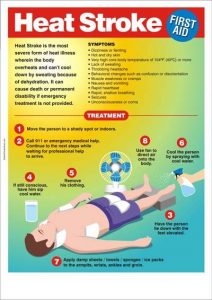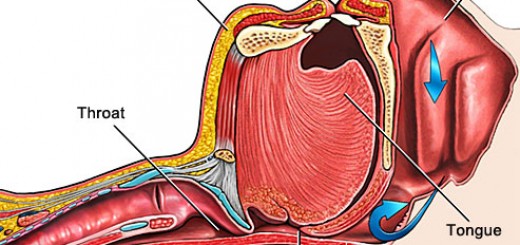First aid for temperature related emergencies
 Heat Emergencies
Heat Emergencies
Victims exposed to heat may experience symptoms that may be minor to life-threatening. To avoid heat-related emergencies you should remember to drink plenty of fluids and dress appropriately for the conditions. Upon discovering someone suffering from a heat-related emergency you must act quickly to avoid further progression of the situation.
General Heat Sickness
Victims suffering from heat-related illness will have muscle cramps, headache, nausea, weakness, and dizziness. Victims should be actively sweating during this stage. To treat persons with these symptoms: move them to cool or shaded area, loosen and remove layers of clothing, have the victim drink cool to cold fluids, fan the victim. Monitor the victim for signs of confusion or abnormal behavior. If the victim does not recover or show improvement call for emergency medical help immediately.
Heat stroke
Heat stroke is a life-threatening condition that requires immediate medical attention. Signs of heatstroke is confusion, vomiting, inability to drink, red, hot, and dry skin, abnormal breathing, or seizures. Victims of heatstroke may stop sweating. If you suspect someone is suffering from heatstroke call for emergency medical help immediately, provide care as you would for general heat sickness.
Never ignore the signs of heat sickness or heatstroke. Never rapidly cool victims with submersion in ice-cold water. Never allow a victim to eat or drink if they are confused, vomiting, or have had a seizure.
Cold Emergencies
Cold emergencies may be systematic or isolated to one part of the body depending on the extent and nature of the exposure.
Frostbite
Frostbite is common to fingers, toes, nose, and ears. Frostbite occurs typically outside in cold temperature but may occur indoors when working with cold materials. Signs of frostbite include skin that looks white, waxy, or greyish. The area is usually hard and numb of sensations. To treat frostbite remove the victim from the cold to a warm place. Remove any wet or tight clothing and jewellery. Never attempt to “thaw” a part of the body unless access to a medical facility is limited.
Hypothermia
Hypothermia is a life-threatening condition that occurs when the body temperature drops. Hypothermia may occur even the temperature is above freezing. Signs of serious low body temperature include cold hard skin, bluish skin, be confused or acting strangely, and have muscle rigidity. Shivering may stop after the body cools considerably. As body temperature drops the victim may become more unresponsive, have shallow or absent breathing, or appear dead. To treat hypothermia remove the victim from the cold to a warm place, remove wet clothing and dry the victim, cover them with blankets, and call for emergency medical help immediately. If you are a long distance from help or a hospital you may start to actively rewarm the victim by placing them by a heat source or placing heat packs on the body in areas such as the armpits and groin.





